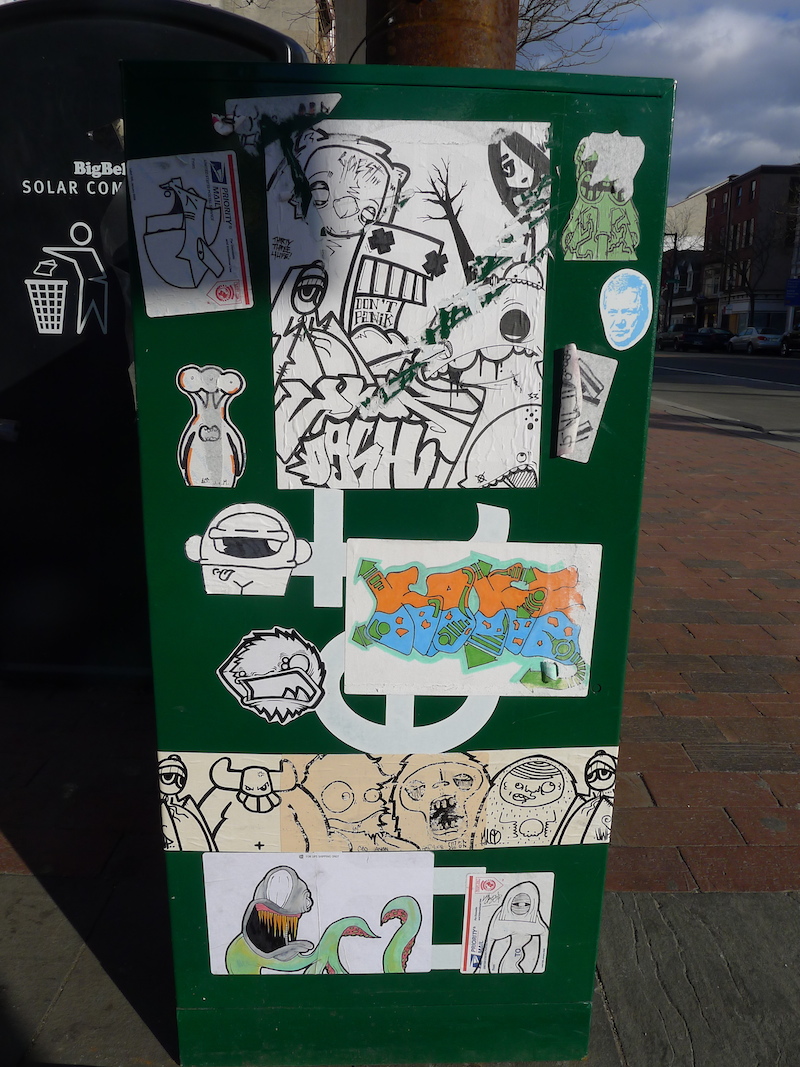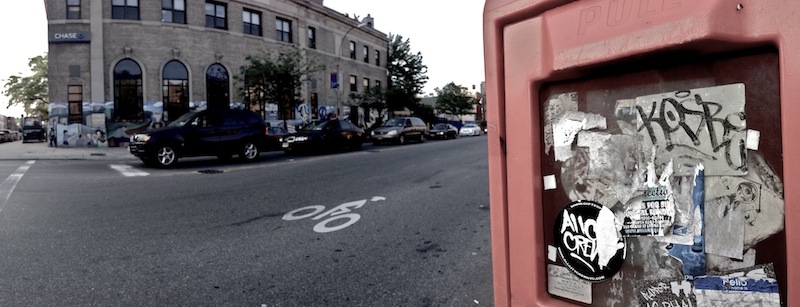And on the flip side of that criticism is yet another… that what looks good in a photo and what looks good on the street is not always the same thing. This I definitely agree is true. The experience of viewing street art and graffiti online is not always subpar to the experience of seeing it on the street, but some work photographs well and other work does not.
Some street art looks better in a photo than in person, and so it get spread on the internet like it’s the shit, when really nobody who has to walk by that piece every day actually likes it because it’s just plain shit. This is a similar category to for-the-photo street art, but not exactly the same. Critics bringing up this point may ask why it’s good to share bad street art. I will admit that this problem has frustrated me in the past. Sometimes I have a good idea from looking at a photograph if the work will look better or worse in person, but not always. And, if I am trying to support street art on the street with my particular blog, it does seem counterproductive to be promoting work that only looks good online. Promoting street art that only looks good in photographs is dangerous because it promotes a misuse of the street. I hate to sound like a guy who thinks he can decide what should or should not be on the street, but I do think that there are good uses of wallspace and poor uses of wallspace. One really poor use of wallspace is to paint something that looks great in a photograph but maybe not so great in person. I would rather see an ugly piece of illegal graffiti on a wall than a legal mural painted on it that only looks good in a photograph.

Stickers by various artists on a newsbin in Philadelphia. Photo by RJ Rushmore.
What disappoints and frustrates me more is when I don’t feel that I can share some art that I do like because the appeal won’t carry over to the web. I enjoy walking around Philadelphia and looking at the handmade stickers that artists place on the newspaper bins. Keeping track of who has been where and when they were there is a fun game for me to play while I walk around the city. But most sticker art does not carry over to the web as well as some street art does, in large part I think because photos of the stickers (and the stickers themselves) all begin to look the same very quickly. That’s great for building up a name on the street, but the online audience usually demands something different. I’ve tried photographing stickers in the iPhone’s panorama mode to make things a bit more interesting, but even those photos can’t compete online against a great shot of a massive mural.

Handmade sticker by Cosbe along with other stickers. Photo by RJ Rushmore.
Logan Hicks believes that his career was helped by the internet because his work can generally be understood on some level in a quick glance, whereas a lot of art (street art and otherwise) has been pushed aside. He says, “Anything that takes more than a half-second to look at, the internet has slowly eroded.” That’s an interesting point, and I think a valid one in many cases. The kind of work that people like to look at online looks good in a photograph and can be “read” quickly, whereas artwork that does not photograph well or is too complex to begin to decipher in one quick glance isn’t going to get shared nearly as often. That said, even the complex and difficult to photograph art which isn’t getting shared 50 times a second is still available online to more people than might have seen it in person before the internet, and the web has opened up possibilities for conceptual street art that requires an explanation in order for it to be properly understood.
Regardless of the quality of the photograph in comparison to what the artwork looked like in person, seeing the work online is not the same as being there and stumbling across it randomly with no context. Is there a mystique lost when work is posted online? Sure. I’ll acknowledge that. There’s nothing like discovering a piece of street art on the street completely unexpectedly, especially if it’s good and you have no idea who the artist is. But the same piece a handful of people might discover tucked away in an alley and love can spread to so many more people online, and that global availability doesn’t take away from the experiences of those who find the piece in person by accident.